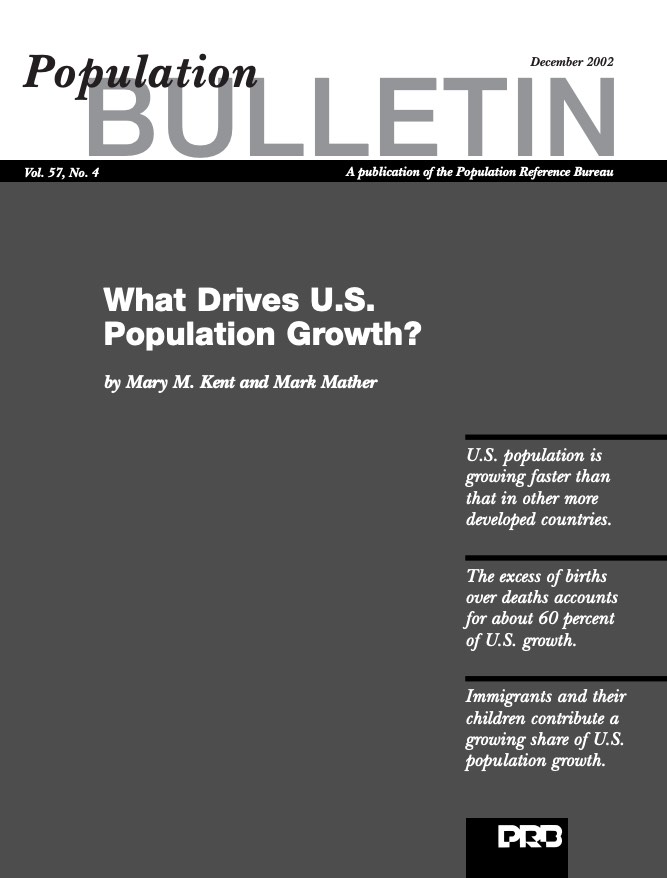
What Drives U.S. Population Growth?
(December 2002) The U.S. population is growing as fast as or faster than any other more developed country. Between 1990 and 2000, nearly 33 million people were added to the U.S. population—a group nearly as large as Argentina’s population, and the greatest 10-year increase ever for the country. This growth is in stark contrast to the slow or negative population growth in other more developed countries, and reinforces the United States’ demographic position in the developed world.
At 288 million in 2002, the United States is also the world’s third-largest country. Although it is well behind numbers one and two—demographic billionaires China and India—the United States remains the largest more developed country. Russia, with 145 million in 2002, comes closest in size, but its numbers are dwindling because it has more deaths than births each year. Japan—at 127 million the third-largest more developed country—also faces population decline in the near future. Other more developed countries, a group that includes the rest of Europe, Canada, Australia, and New Zealand, are far smaller and are not expected to grow much larger over the next half-century. The United States, in contrast, is projected to add nearly 140 million people by 2050, bringing the population total to 420 million.
One of the striking differences between the United States and other more developed countries is the United States’ youth. More than one-fifth of the U.S. population was under age 15 in 2002, compared with less than one-seventh of the Japanese population. While the populations of the rapidly growing countries of Africa and Latin America have much younger profiles—many with more than one-third under age 15—the United States is still young enough to generate future growth. The age structure, along with relatively high fertility and immigration, is likely to fuel continued U.S. population growth.
The sources of growth are also bringing diversity. The populations of many countries are becoming more ethnically and culturally diverse, but the U.S. population is undergoing such a dramatic transformation that current labels of race, ethnicity, and minority may have little meaning in 50 years. Some Americans are concerned that this diversity and growth may harm the U.S. economy, disrupt the social structure, or cause environmental deterioration, while others see these changes as a source of strength and revitalization.
This Population Bulletin will look at the sources of growth and change in the U.S. population, especially compared with other more developed countries.
Mary M. Kent is the editor of the Population Bulletin at the Population Reference Bureau (PRB) and has written and edited publications on a variety of U.S. and international population issues. Mark Mather is a policy analyst at PRB, where he coordinates several projects that communicate population research to advocacy groups, educators, the media, and the public.

 ">
">